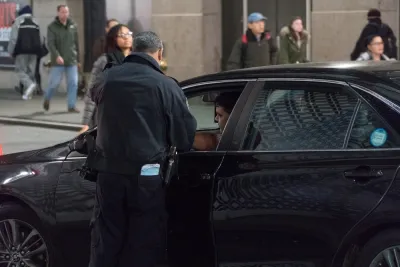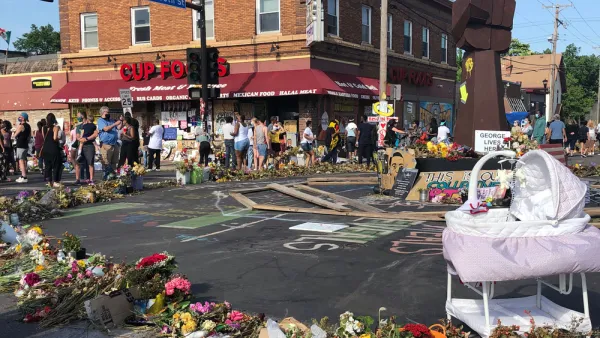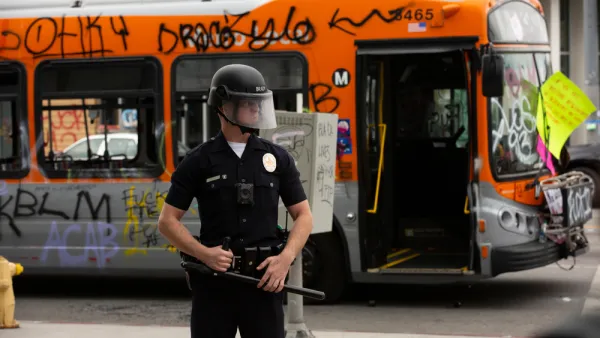In Nick Demarsh and Rick Banks' opinion, defunding the police requires cities to reconsider car culture.

Nick Demarsh and Rick Banks say that the conversation about police defunding or abolition requires consideration of the role of the personal vehicle in American life. On average, police spend 15% of their time on traffic enforcement, they say. Investing in infrastructure that could reduce the need for traffic enforcement is a great step toward divesting from police and avoiding situations that are disproportionately dangerous for Black and brown Americans, opine Demarsh and Banks:
If we understand the relation of policing and cars and the antidote – public transit – re-investing funding from police agencies to transit systems demonstrates a possible remedy to the dual threat of violence from policing and cars. By transitioning resources from police departments to transit agencies, cities could both reduce the need to protect communities from reckless driving and increase racial equity in our cities.
The article draws a poignant connection between increase in policing and the mass incarceration of the prison industrial complex. Similarly, Demarsh and Banks point to the rise of the personal vehicle as an ultimate source of police enforcement hours and the construction of freeways as destructive forces in communities of color.
sets out a reminder of this history of police by the desire to enforce mass incarceration and the prison industrial complex, drawing connections between the rise of the police force with the rise of the personal vehicle.
"Understanding the history of the growth of policing during the rise of the car provides important insight for our discussion about the role of policing today," remind Demarsh and Banks, arguing for the allocation of police budget to public transit investment.
Recognizing the potential of increased policing on transit (ACLU found that 9 of 10 Cleveland BRT Healthline stops were of Black riders), Demarsh and Banks suggest that free fare could reduce the need for police and be funded by police department budgets.
FULL STORY: Can We Abolish the Police Without Challenging the Status Quo of Car Culture?

National Parks Layoffs Will Cause Communities to Lose Billions
Thousands of essential park workers were laid off this week, just before the busy spring break season.

Retro-silient?: America’s First “Eco-burb,” The Woodlands Turns 50
A master-planned community north of Houston offers lessons on green infrastructure and resilient design, but falls short of its founder’s lofty affordability and walkability goals.

Delivering for America Plan Will Downgrade Mail Service in at Least 49.5 Percent of Zip Codes
Republican and Democrat lawmakers criticize the plan for its disproportionate negative impact on rural communities.

Test News Post 1
This is a summary

Test News Headline 46
Test for the image on the front page.

Balancing Bombs and Butterflies: How the National Guard Protects a Rare Species
The National Guard at Fort Indiantown Gap uses GIS technology and land management strategies to balance military training with conservation efforts, ensuring the survival of the rare eastern regal fritillary butterfly.
Urban Design for Planners 1: Software Tools
This six-course series explores essential urban design concepts using open source software and equips planners with the tools they need to participate fully in the urban design process.
Planning for Universal Design
Learn the tools for implementing Universal Design in planning regulations.
EMC Planning Group, Inc.
Planetizen
Planetizen
Mpact (formerly Rail~Volution)
Great Falls Development Authority, Inc.
HUDs Office of Policy Development and Research
NYU Wagner Graduate School of Public Service





























